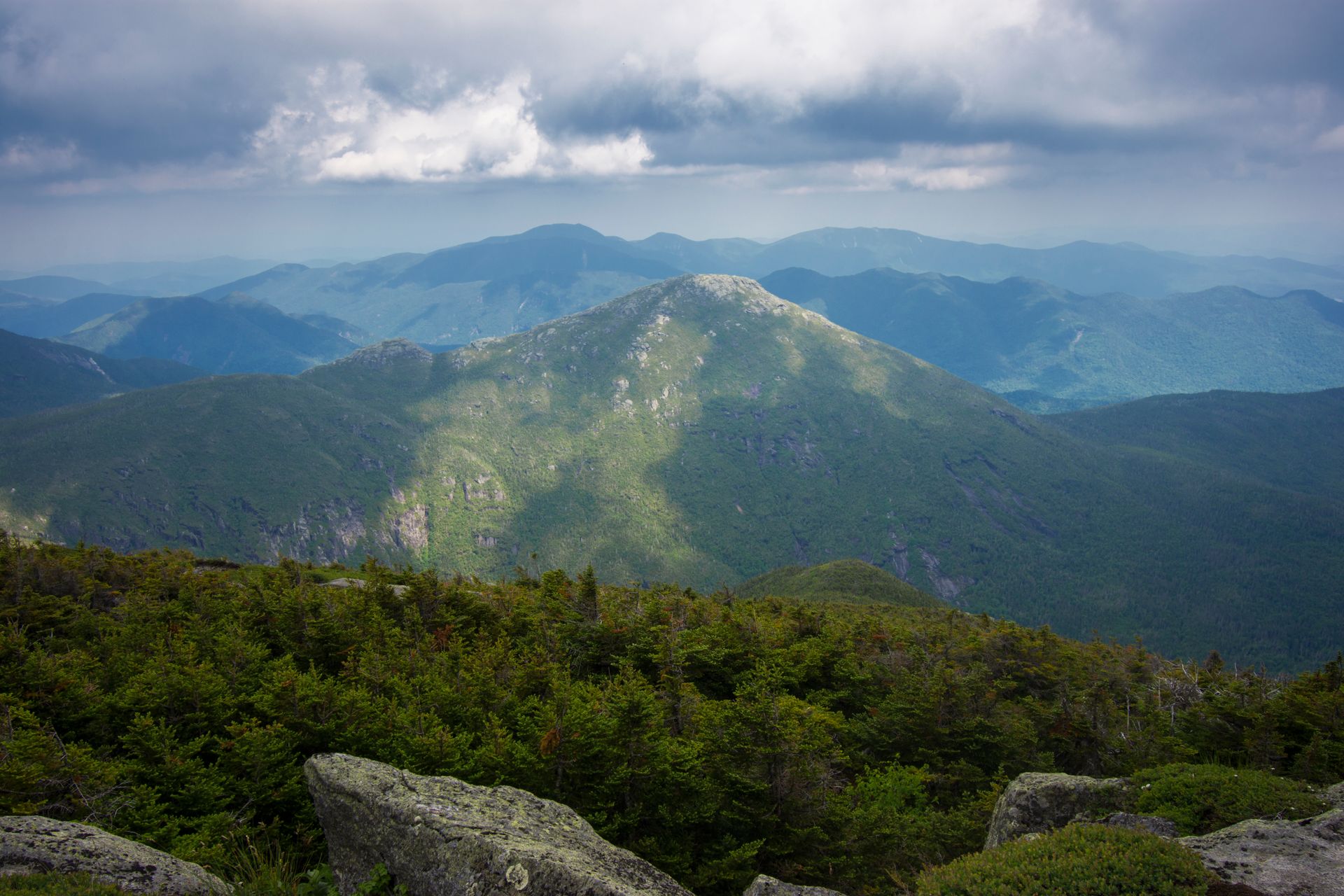"Beautiful Country!" Roosevelt declared as he gazed across the expanse of trees, lakes, and mountains that stretched to the horizon. "Beautiful country!"
New York State
Times Square, Empire State Building, Broadway. . . those are the flashes of images that immediately pop into the minds of most people when they think of New York. It turns out there is much more to the Empire State than concrete and skyscrapers. A better description of the state would be ancient, pristine, and wild.
The Adirondacks are sleepy and relatively small mountain range that stretch though a portion of northern New York state. The range was one of the first protected areas in the country, making it a it a marvel among north eastern forests.
I was born and raised in the Pennsylvania and was accustomed to the rolling blue hills of the Appalachian mountains. Living only four hours away from the Adirondack range, I figured it was just another part of the familiar Appalachian range, because of this reasoning, I never bothered to check myself, and extensively explored the West before even going north.
Finally, just this year, I decided to visit the New York Mountains, and was taught an important lesson that took me far too long to learn - sometimes, the most beautiful places can be right in your own backyard.
Hiking The Adirondack Range

Although the range resides in the presence of the great Appalachian Mountain Range, the Adirondacks are entirely separate, in fact, they are mostly composed of a completely different type of rock altogether. I'm no geologist enthusiast, but I found this interesting. The rocks in the Adirondacks are metamorphic, which are rocks created by the heating and crushing of the earth's crust. The Appalachian range is sedimentary, meaning growth by deposits of materials on the earth's surface. What does this all mean? The Adirondacks are still growing while the Appalachians, though once as great as the Himalayas, are shrinking.
But enough about rocks. The Adirondack range has evidence of human activity dating back to 10,000 bc, but there is little evidence of there ever being long-term residences. It seems as though the native people used the range as a hunting and traveling range rather than a permanent home. The Mohawks and Algonquian peoples are the most notable for the calling the region home, and the name Adirondack comes from the Mohawk word porcupine or 'tree eater'.

Even with the introduction of European settlers in the 1600's, the range was mostly left unsettled. The forests were dark and foreboding, and large mountains made traveling difficult to navigate. In the mid 1600's, the English acquired the land when New Netherland was given to the king. Shortly following the Revolutionary War, the land was then passed to the state of New York. The new state quickly sold the land to private interests, which began logging the range's rich source of lumber. With few restraints in logging, the Adirondacks, especially the southern section, was heavily deforested. New York Legislation fought to protect the land, and in 1873, the New York State Land Survey suggested the Adirondacks be turned into a forest preserve.
Years later, the range found another champion in young Theodore Roosevelt. While a statesman and later the governor of New York, Roosevelt fought to establish hunting restrictions, staffed the conservation bureau with scientists and environmentalists, and advocated for environmental protection beyond politics. He created a model of conservation that eclipsed all others designed at the time.
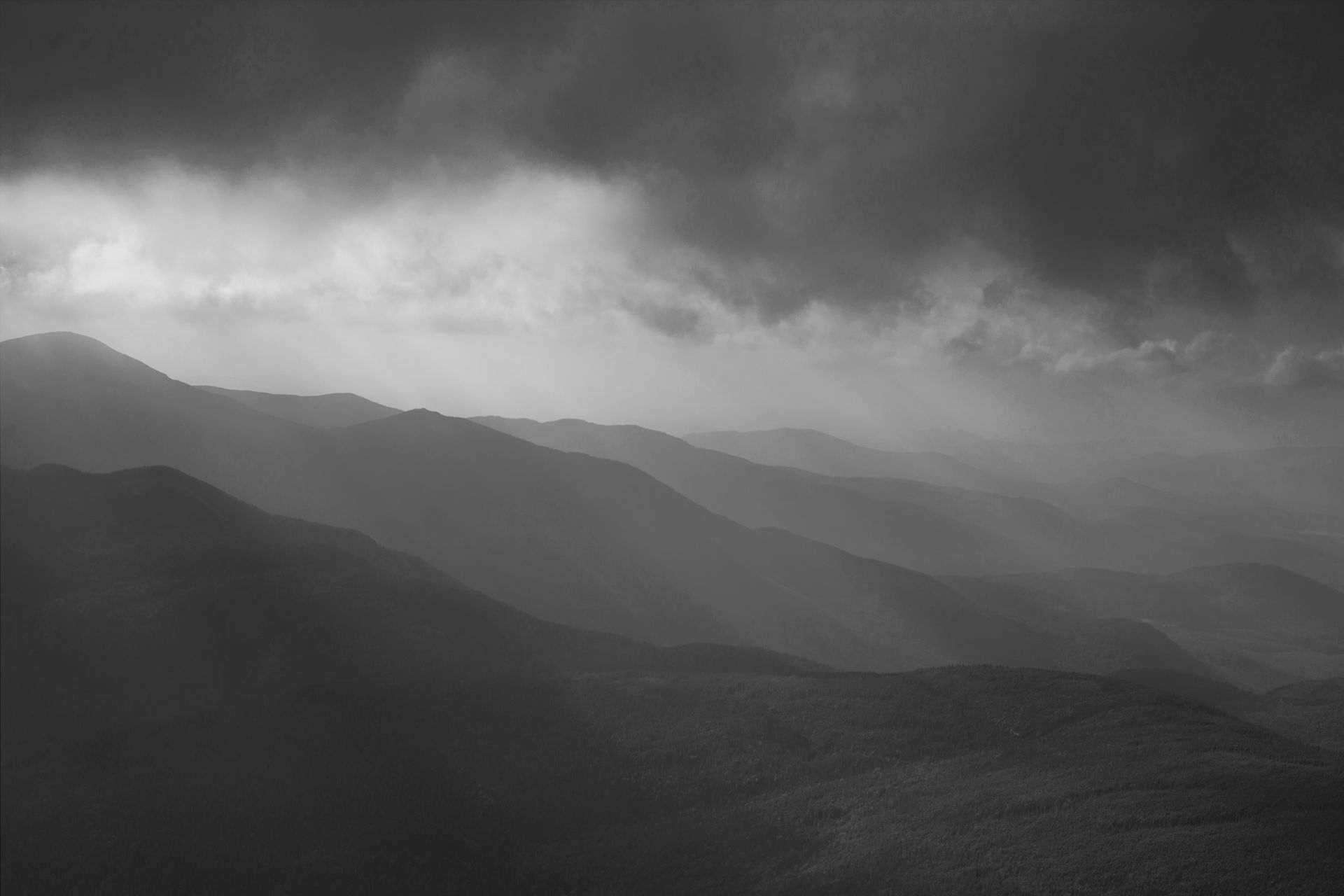
During a trip to summit Mt. Marcy in September of 1901, Roosevelt received a letter, while resting at the Tear of the Clouds Lake, stating that President McKinley was dying from the assassin's bullet. Roosevelt recorded in his diary "I had a bully tramp and was looking forward to dinner with the interest only an appetite worked up in the woods gives you," he recalled. "When I saw the runner I instinctively knew had had bad news-the worst news in the world."
It was my personal interest in Roosevelt that finally drove me to the Adirondack Range. If Theodore Roosevelt - world traveler, nature lover, and environmental enthusiast - held the mountains in such great esteem, then they must be worth a visit.
Climbing Mt. Marcy
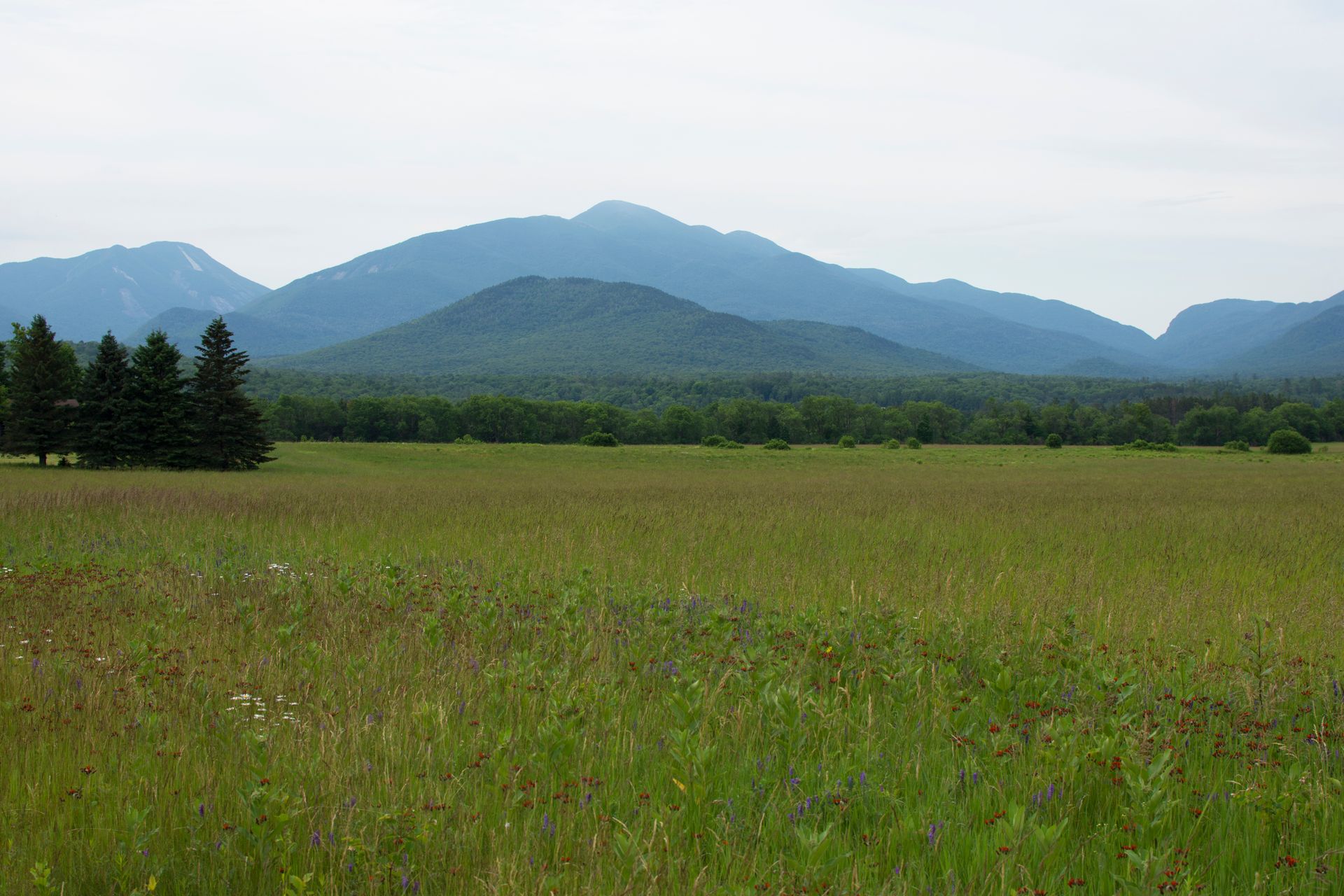
There are almost unlimited opportunities of exploration in the 6 million acres of the park, and it was honestly difficult to decide what to hike. My brother, Andy, claims to be an expert on the Adirondacks and simply suggested that we hike the tallest mountain in the range, Mt. Marcy. And that sounded just fine to me.
The trailhead is off a road that is about 4 miles from the town of Lake Placid (confusingly nowhere near the lake, Lake Placid). Parking was easy to find in the morning, but quickly filled up - so plan to get there early.


Shortly after starting the trail, you will come across the wilderness kiosk. Make sure to fill out the simple registration. This gives rangers an idea of how many people are up in the mountains at any given time, in case of emergencies.
From the South Meadow Trailhead, you'll hike 2.8 miles down a well maintained, dirt path, to the the Marcy Dam. Because of the trail conditions and relative flatness, this section should only take you about an hour. At the dam, you'll find a few lean-to's, and a small recreation area.
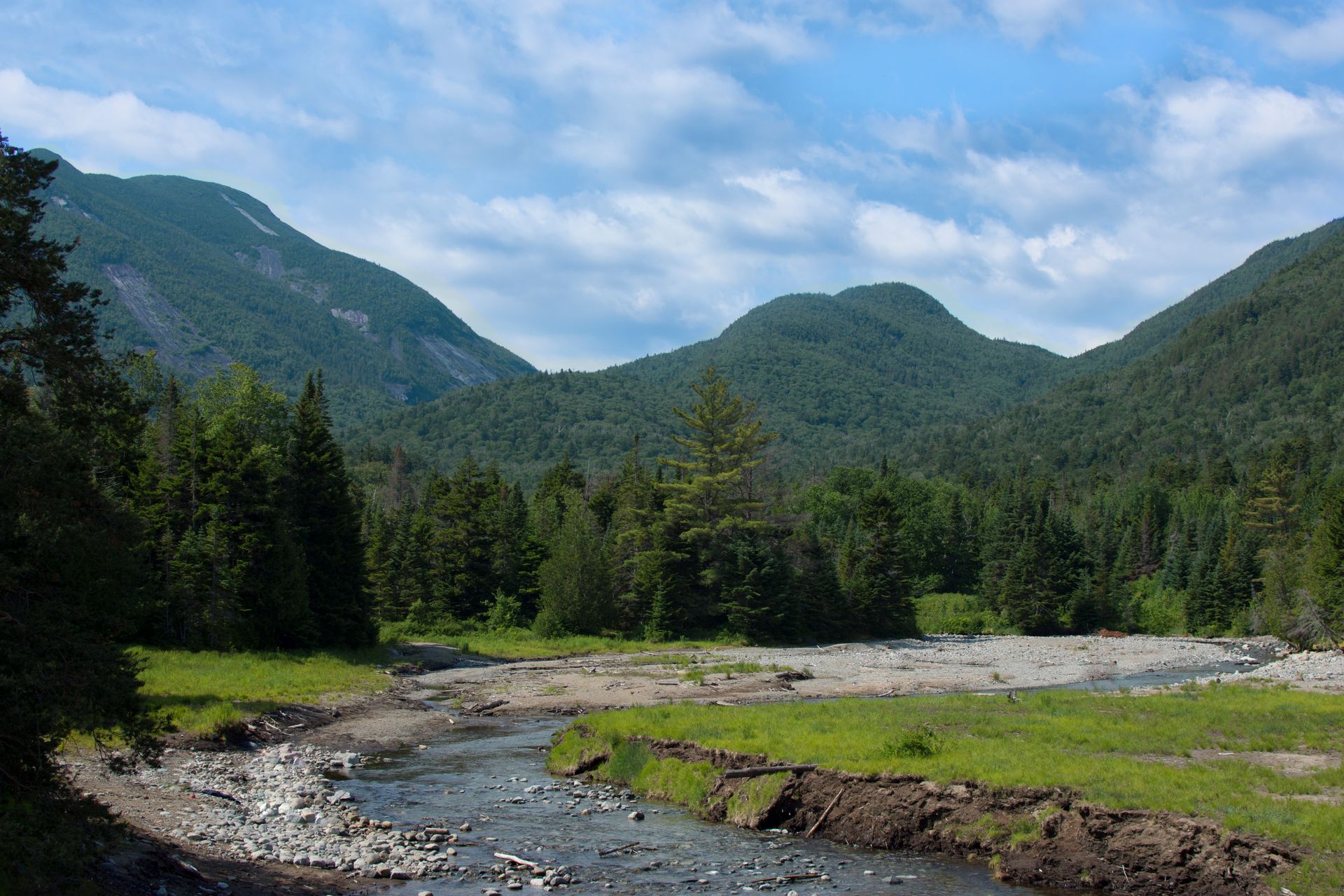
After reaching the dam, the trail will break off and lead to a few different summits. You want to take the standard, Van Hoevenberg Trail, which is clearly marked. From the Dam, the summit is still ~5.5 miles away, making the round trip from car to summit nearly 16 miles - a long day. I had nearly 23 miles on my watch once the day was over.
Amazingly, the Adirondacks are extremely back country and primitive camping friendly. Camping is allowed on most in most the park, as long as you follow the 150 foot rule. There are also designated campsites, permanent lean-to', and very distinct 'no camping' areas, making backpacking trips easy to plan and allows flexibility during a trek.
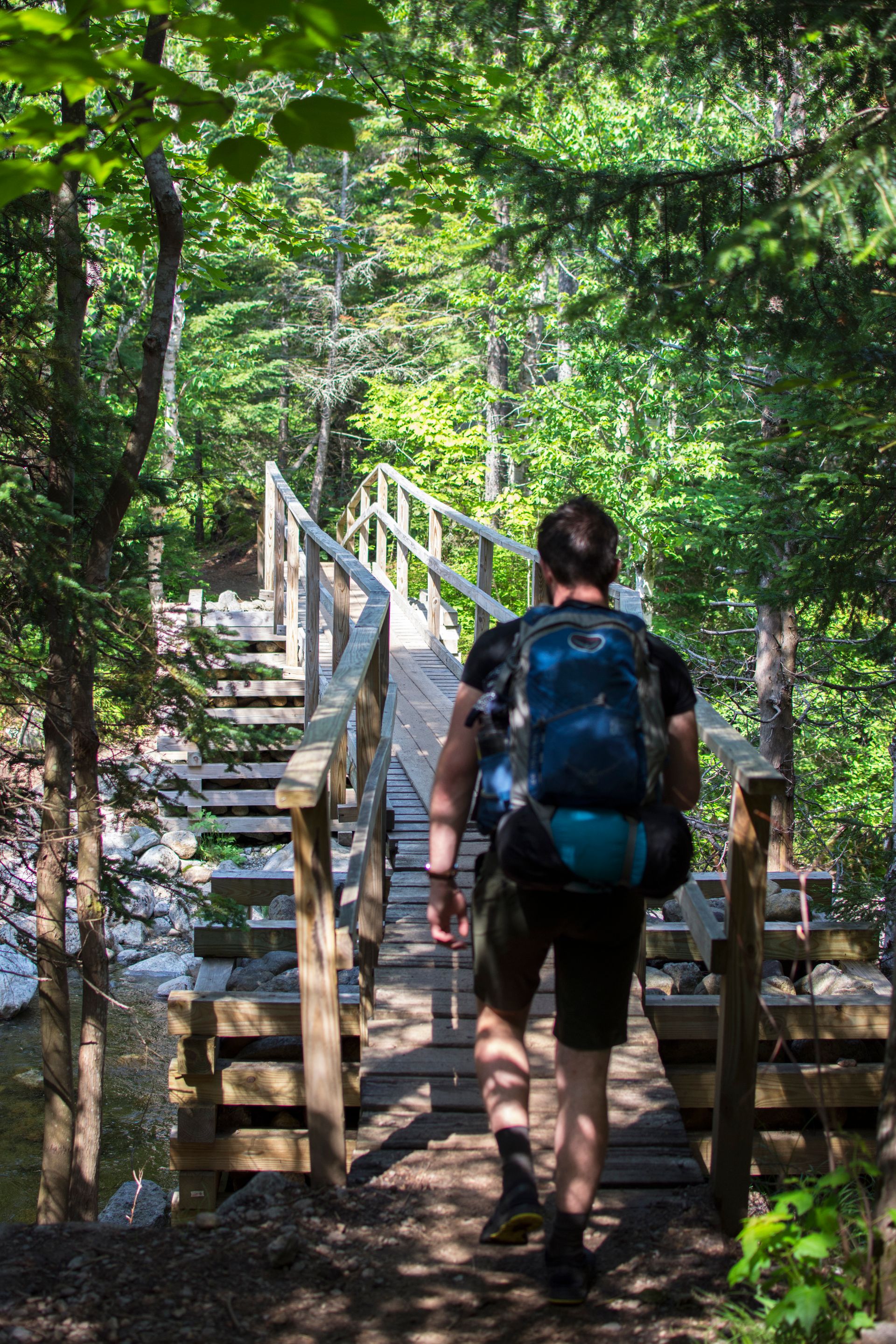
Nearly as soon as you leave the dam, the trail conditions worsen, and you begin to gain elevation. The elevation gain wasn't too bad, it was a steady, slow, uphill the entire time. In fact, I can't remember a single switchback!
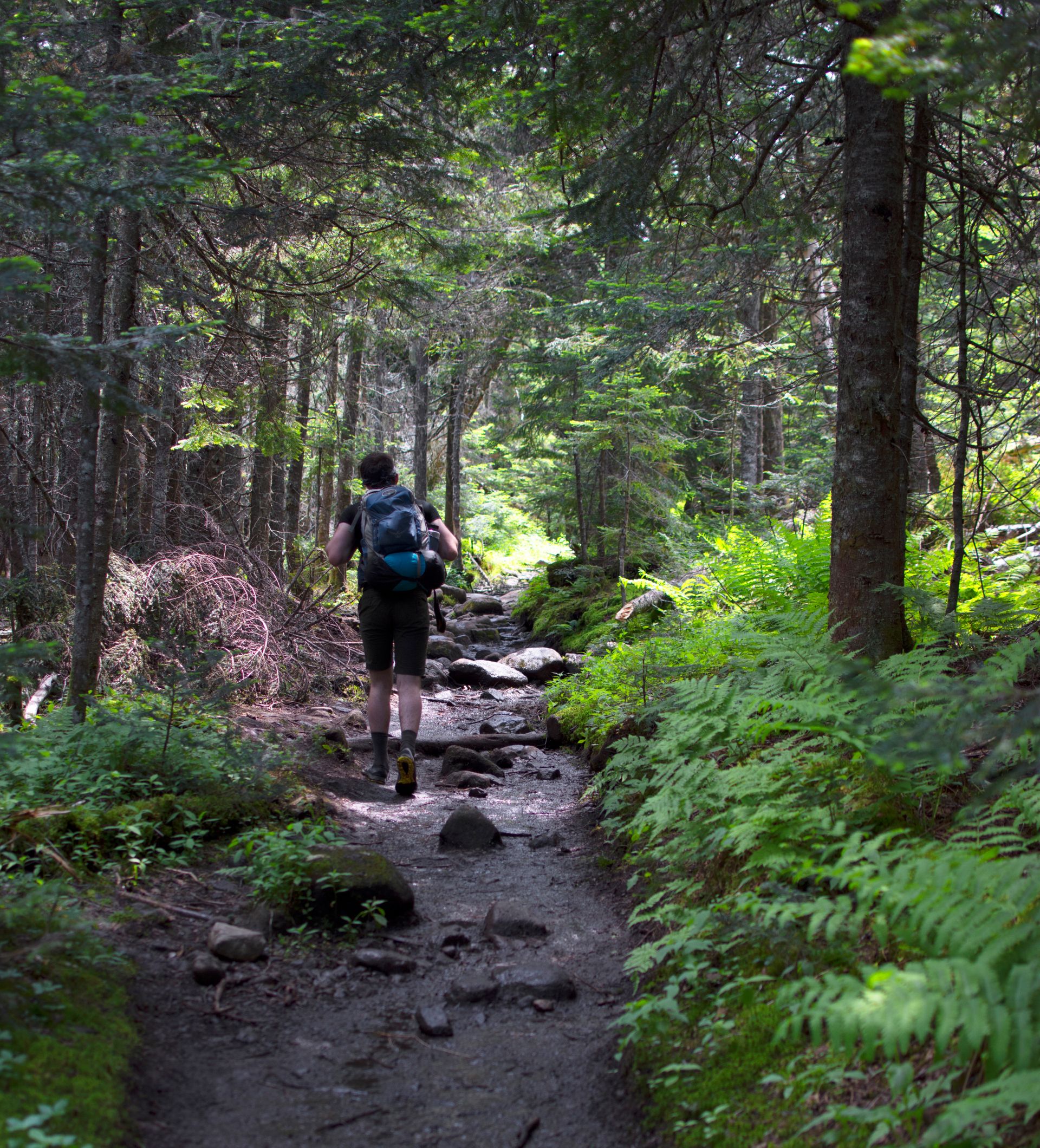
The trail is rocky, muddy, and winding. It was fun going, but make sure you have a light if you plan to hike back in the dark. Roots and snags are rife along the entire trail, and I found myself slipping regularly. Despite the conditions, the trail was clearly visible along the entire route, and well marked.
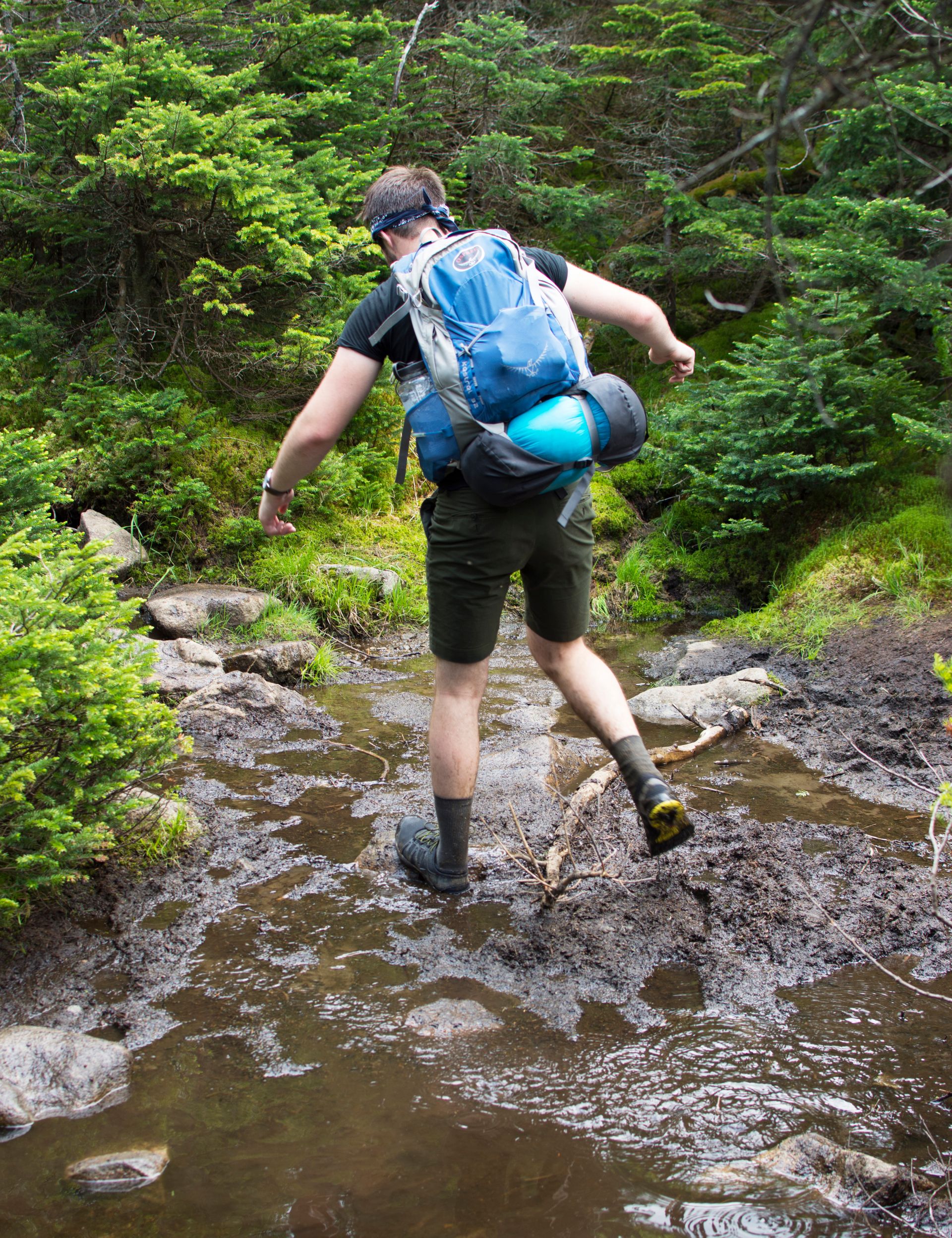
A few miles into the hike, there is a great rest opportunity at Indian Falls. A sign off the main trail will prompt you to follow another path a few hundred yards in another direction. I would recommend taking the slight detour. Until this point you would have been walking entirely in the covered forest, Indian Falls opens the canopy like a window, and gives you a perfect spot to view the surrounding range.

Continuing up the path, the trees will slowly start to shrink and the views of the mountains will begin to grow. The tree line doesn't break entirely until you are almost at the summit of Marcy. Some trees hang on even a few feet below the top!

The trail will cross large pieces of stone, and small marshes. These areas will have planks for you to walk on. Try to stick to the trail - the top of Marcy is one of few alpine environments left in New York State.

Nearing the summitt, a short scramble will be necessary. Follow the yellow markings, and you'll find yourself at the top of Marcy in no time.
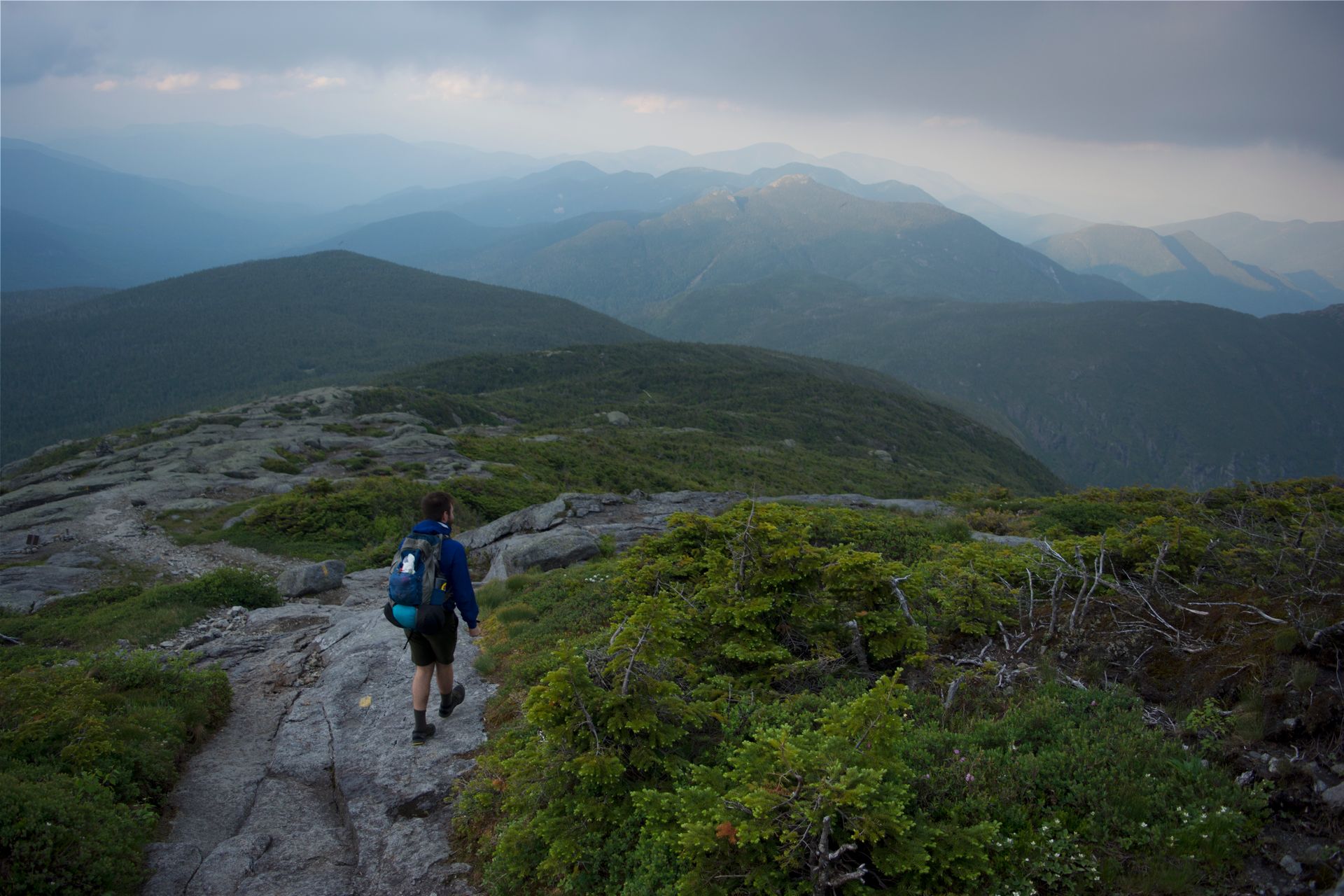
At the summit, be prepared to meet some people. It is a popular destination - so make the most of it. Even with the small crowd, Mt. Marcy has to be the nicest summit I have ever hiked. The area at the top was large enough to find your own little place, the views were stunning, and the wind cooling. It was comfortable at the top - unlike the summits of the west - but still gave a fantastic sense of achievement and scale. After All, the hike is over 3,000 feet of elevation change.
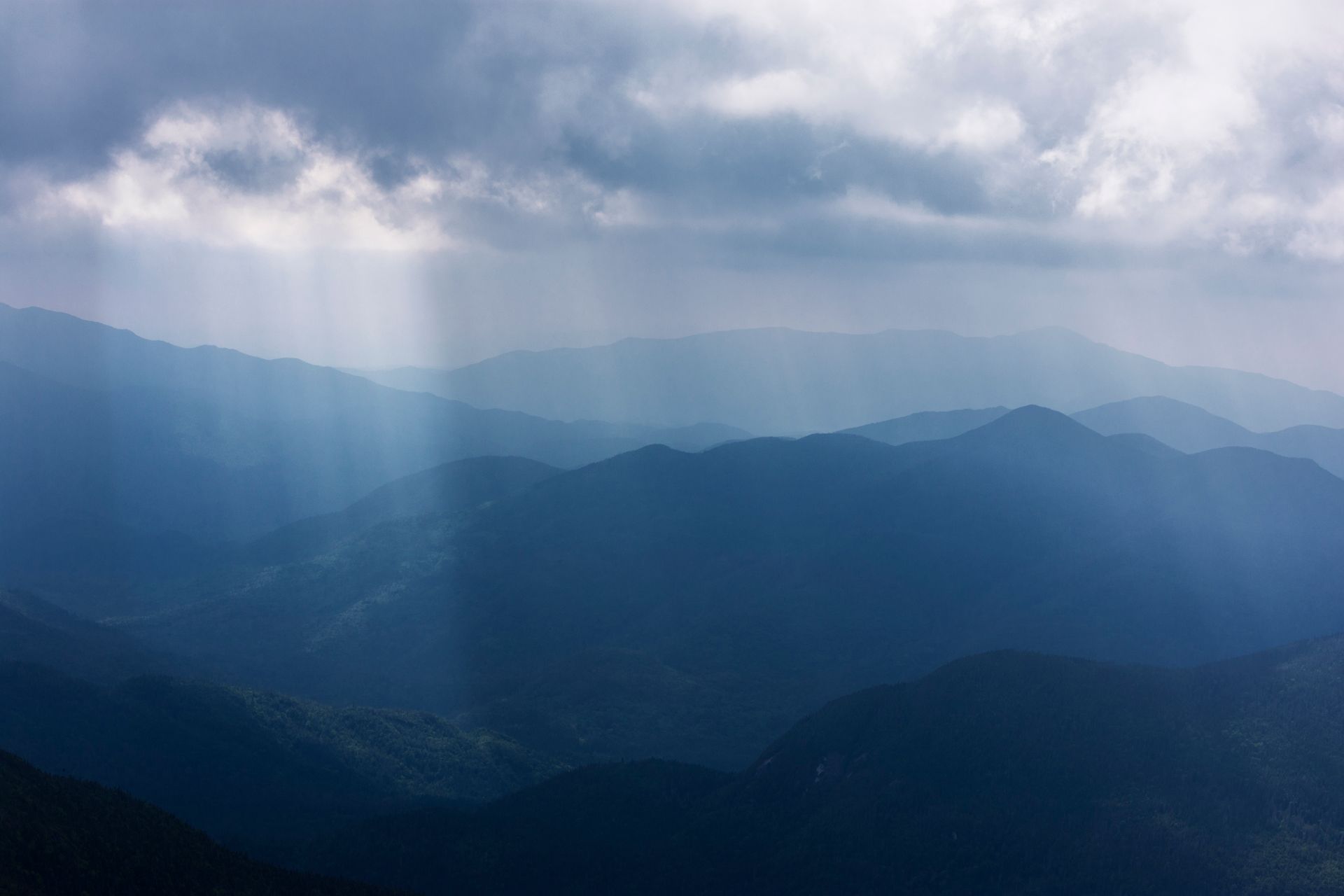
My brother and I decided to spend some quality time with the mountain, and stayed up on the summit for a few hours, napping, reading, and enjoying the views. We noticed that most of the other hikers had left after a few minutes on the peak, and managed to eat dinner with no one else around.

The Magic of the Adirondacks
I chose to backpack during my free time for many different reasons, but primarily, it is because when you put yourself out there, out in the wilderness, sometimes you are rewarded with a little bit of magic.
The struggle, miles, heat, and weight of the back are all worth those few magical moments. I have seen wild forest fires, waded through black lagoons, witnessed amazing storms, braved 80+ mile and hour winds, and seen double rainbows inches from me. But the Adirondacks supplied me with one instance of magic that was beyond anything I found in the West.
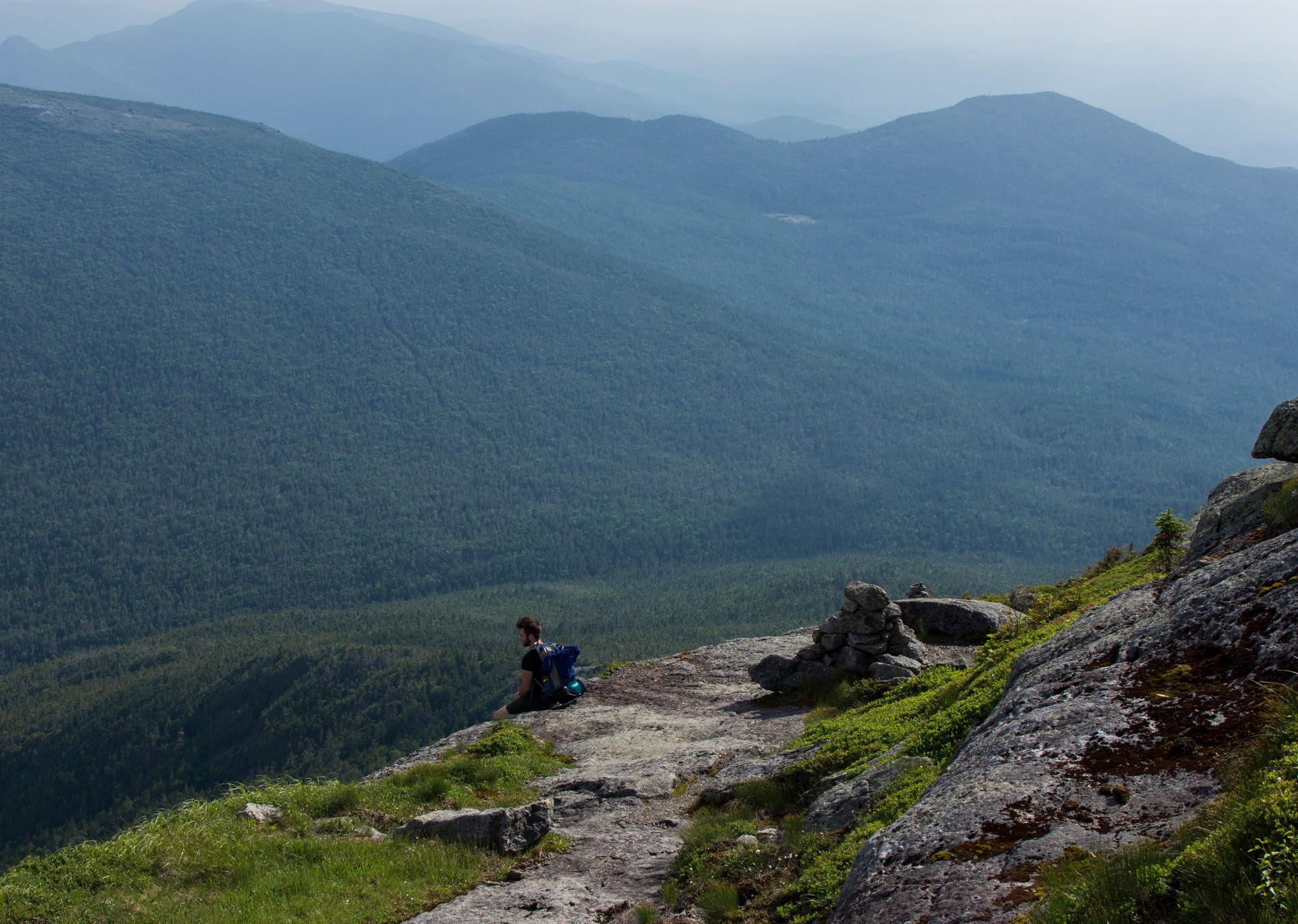
Waiting until after sunset to begin hiking, the trek down the mountain side was a bit treacherous - and became more so when I dropped, and broke, my headlamp, leaving us with only one light. It was dark and the shadow of the forest left no natural light from the moon. The trail was claustrophobically close and daunting.
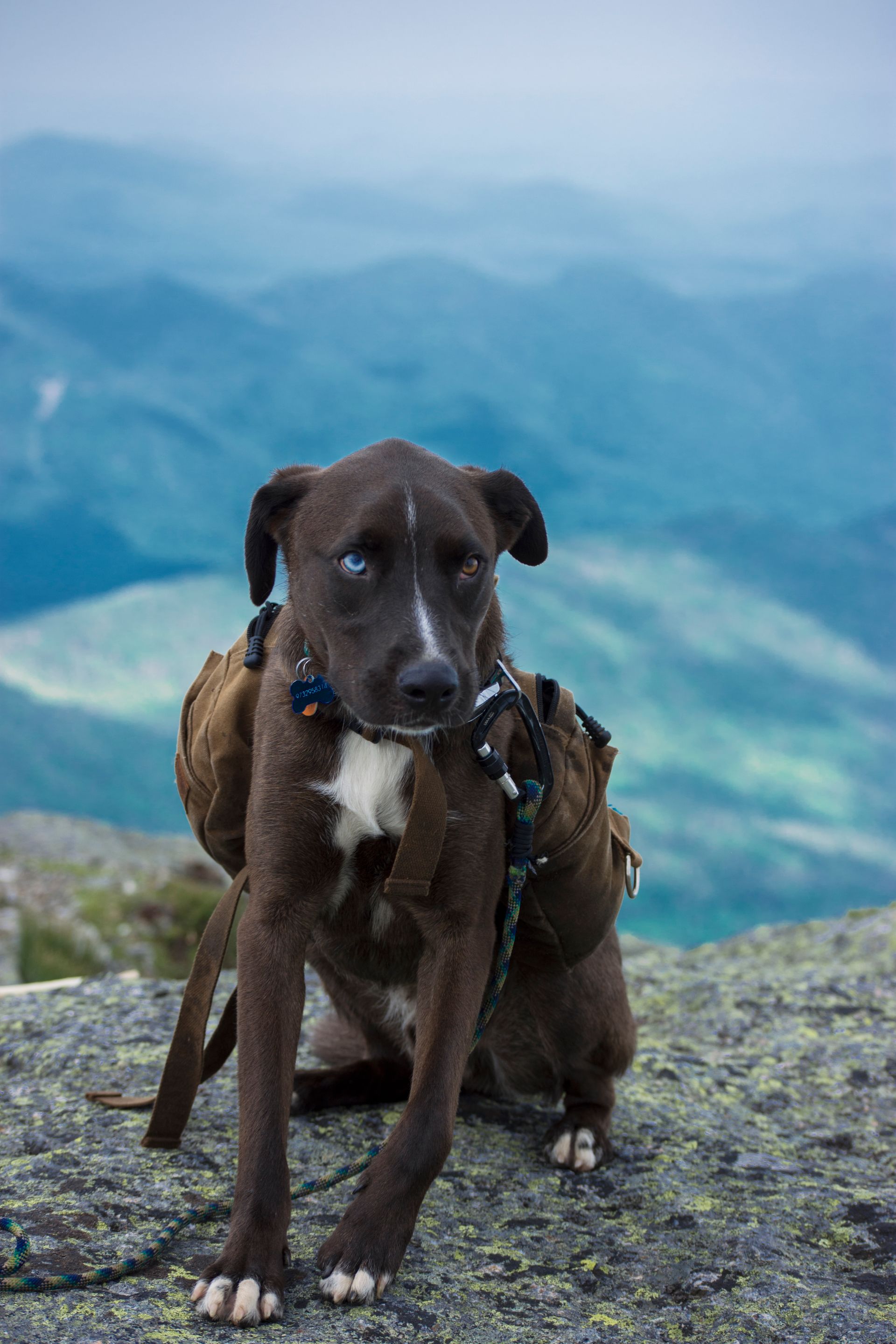
Not far from the peak, and near the Tear of the Cloud Lake (where Roosevelt was informed that he was the 26th president of the United States), I heard the eerie call of the Hermit Thrush. Roosevelt was an avid bird watcher, but the Thrushes call eluded him even after staying for weeks in the Adirondacks. I am no expert on bird calls, but hearing the Thrush once before on Youtube was enough to remember it forever. Finally, after weeks in the forest, Roosevelt heard the Hermit call and he described it as such:
"Wearied by our unsuccess we at least turned homeward when suddenly the quiet was broken by the song of the hermit thrush; louder and clearer it sang from the depths of the grim and rugged woods, until the sweet, sad music seemed to fill the very air and to conquer for the moment the gloom of the night..."
He later said that the Thrush was "The purest natural melody to be heard in this or, perhaps, any land."
It may not seem like a lot. But to me, the call personified the moment, and brought to life one of my heroes. I began to shake, and grew excited. I knew we would make it down from the summit with the Thrush looking over us and guiding our way. The moment was the most magical I have ever experienced in the backcountry, making the Adirondacks possibly my favorite range in the county.
